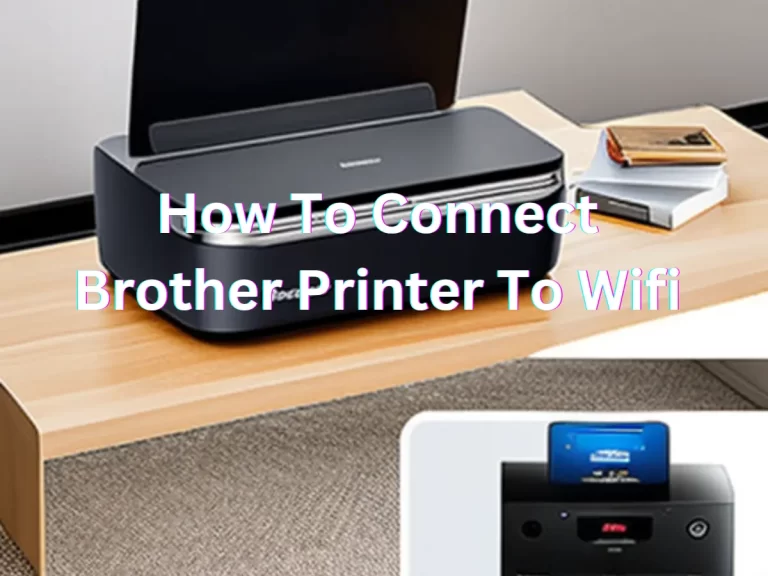Fixing Sublimation Printers Connectivity Issues for Heat Transfers: A Comprehensive Guide [2024]
Are you struggling with constant connectivity issues for your sublimation printer during heat transfers? You’re not alone! This guide offers a comprehensive solution to help you fix these frustrating problems and get your printer back to working smoothly.
With step-by-step instructions, tips, and tricks, this article provides everything you need to know to resolve sublimation printers connectivity issues once and for all.
Whether you’re updating the driver, checking the power supply, or seeking assistance from the manufacturer, this guide has you covered. Get ready to say goodbye to connectivity issues and hello to seamless heat transfers!
Table of Contents
Fixing Sublimation Printers Connectivity Issues for Heat Transfers: [Step-by-Step Guide]
Check the Power Supply:
Ensure Power Supply is Connected Properly. The first step in fixing sublimation printers connectivity issues is to check the power supply. Ensure that the printer is plugged into a working power source and the power cord is properly connected. Sometimes, simply plugging the printer into a different outlet can resolve the issue.
Inspect the USB Cable
If the power supply is fine, the next step is to check the USB cable connecting the printer to the computer. Make sure that the cable is properly connected and not damaged. If the cable is damaged, replace it with a new one. Also, ensure that the cable is not too long, as longer cables can cause connectivity issues.
Update the Printer Driver
Outdated drivers can cause connectivity issues. Go to the manufacturer’s website and check for any updates to the printer driver. Download and install the latest version of the driver. Updating the driver can often resolve connectivity issues.
Restart the Printer and Computer:
Sometimes, simply restarting the printer and the computer can resolve connectivity issues. Turn off the printer and computer, wait for a few minutes, and then turn them back on. This can help reset the connection between the printer and the computer.
Check the Firewall Settings:
If the printer still won’t connect, check the firewall settings on the computer. Firewalls can block the connection between the computer and the printer. Go to the firewall settings and allow the printer to connect. If the firewall is blocking the connection, you may need to add the printer as an exception.
Contact the Manufacturer:
If none of the above steps resolve the issue, it’s time to contact the manufacturer. They can provide further assistance and resolve any technical problems. Have your printer’s model number, serial number, and software version handy when you contact the manufacturer, as this information will be helpful in resolving the issue.
Tips and Tricks:
1. Make Sure the Printer and Computer are on the Same Network
Ensure that both the computer and the printer are connected to the same network. This can help resolve connectivity issues. If you’re not sure if your computer and printer are on the same network, check the network settings on both devices.
2. Use the Original USB Cable
It’s best to use the USB cable that came with the printer, as some third-party cables may not work properly. If you’re using a third-party cable, try replacing it with the original cable to see if this resolves the connectivity issue.
3. Maintain a Short Distance Between the Computer and Printer
Try to keep the computer and printer as close together as possible. If the distance between the two devices is too great, this can cause connectivity issues.
Frequently Asked Questions:
What can I do if the printer won’t connect even after trying all the steps?
If the printer still won’t connect, even after trying all the steps outlined in this article, it may be a hardware issue. Try connecting the printer to a different computer to see if the issue is with the computer or the printer. If the printer still won’t connect, it may be time to replace the printer or have it serviced.
Can a virus cause connectivity issues?
Yes, a virus can cause connectivity issues. Ensure that your computer has a reliable antivirus program installed and run a scan to make sure that your computer is not infected. If a virus is causing the connectivity issue, the antivirus program should remove it.
What if the USB cable is too long?
If the USB cable is too long, this can cause connectivity issues. Try using a shorter cable or move the printer closer to the computer.
Conclusion:
By following the steps outlined in this guide, you can successfully resolve your sublimation printers connectivity issues for heat transfers. Whether you’re checking the power supply, updating the driver, or contacting the manufacturer, these steps can help you get your printer up and running in no time.
So don’t wait any longer, start fixing your sublimation printer connectivity issues today!
Related Posts:
Best Sublimation Printers For Heat Transfers
How to Fix Common Issues with Sublimation Printers for Heat Transfers [Solved]
Solving Color Problems with Sublimation Printers for Heat Transfers
How to Resolve Paper Jams with Sublimation Printers for Heat Transfers





